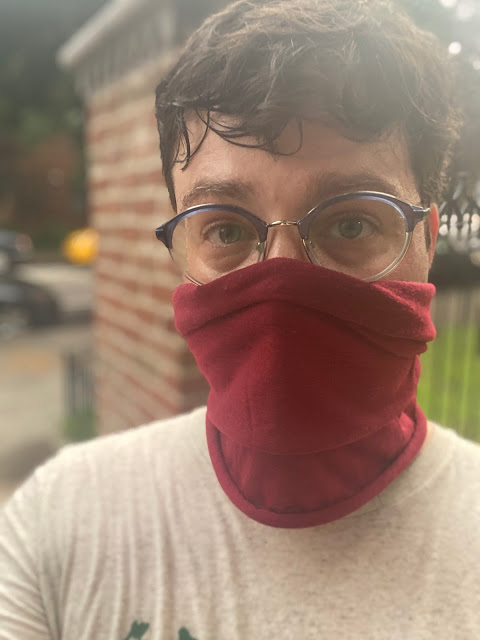Found these in my camera roll and I'm surprised by the shades of red found herein. It's hot and muggy here in New York. But flowers are abloom. I notice signs of humanity — a mother and son crouch together on the median on the 37th Avenue pedestrian zone and talk. A pile of police officers, eight or ten of them, stand in front of an apartment building, one holding what looks like a silver revolver 🔫. ”It’s fake, ” the officer says calmly. ”Found it here?” I ask. They did — after someone had called it in. A boy and a girl practice ollies on the street. I had hoped to use a camera to capture some of these moments. But I was too caught up in the moment.
Stones of Erasmus — Just plain good writing, teaching, thinking, doing, making, being, dreaming, seeing, feeling, building, creating, reading
13.8.20
Photographs: Red Mask, Red Flowers, Pedestrians in Queens
 I am an educator and a writer. I was born in Louisiana and I now live in the Big Apple. My heart beats to the rhythm of "Ain't No Place to Pee on Mardi Gras Day". My style is of the hot sauce variety. I love philosophy sprinkles and a hot cup of café au lait.
I am an educator and a writer. I was born in Louisiana and I now live in the Big Apple. My heart beats to the rhythm of "Ain't No Place to Pee on Mardi Gras Day". My style is of the hot sauce variety. I love philosophy sprinkles and a hot cup of café au lait.
18.7.20
Reflecting On Being A Teen Reader: A Literacy Autobiography
Thinking back on who I was as a teen reader puts into focus why adolescents need to develop steady habits of reading.
Taking A Course at Hunter College Encouraged Me To Think About the Adolescent Reader
During the Summer of Covid-19, I was planning to go to Chicago to learn about maps. But my plan was foiled, and I have been home this Summer like most of us. So. Never to sit idle for long, I enrolled in an Education class at Hunter College. Taking Adolescent Literacy, the professor has us plunging into the myriad forms of reading that we can have our students read, dissect, decode, translate, and take to sustaining levels of engagement. I love the course. It had me thinking of myself as a teen reader. So — I took a walk down memory lane, and I tried to envision who I was as a teen who read.My Adolescent Experience in Literacy Began With An Ugly Divorce
My earliest memory as an adolescent reader stems from the transition I went to from Sixth to Seventh Grade. At that age, I was going through the expected change from a kid to a tween, and I had just gone through my parents' ugly divorce. In Fifth and Sixth grades, my academics had suffered, and I had achieved low scores in Math. I perceived myself as an average student even though I had read The Chronicles of Narnia series by C.S. Lewis. I had devoured stories, such as Hans Christian Anderson's "The Tinder Box," which I would listen to in concert with the audio on a Fisher-Price record player. It played 45 records, and you could check them out from the library.Reading instruction in middle and junior high school was based on reading comprehension and discussion of the book. But I would often read the entire book by myself and not pay attention to the homework and sometimes do poorly on the end-of-the-reading exam. We read Tuck Everlasting, My Brother Sam is Dead, The Witch of Blackbird Pond, Hatchet, and Mrs. Frisby and The Rats of N.I.M.H. — books I liked but I wanted to get through them so I could read other books! So when the exam came, I often forgot vital details about the "class book" because I was not in sync with the rest of the class.
Adventures in Junior High School in South Louisiana
Growing up gay, it was through reading novels that I discovered in the library that I learned that people like me existed. For example, Gore Vidal's The City and the Pillar was a thin volume I found in the library's fiction section. It's about a young gay man coming to terms with his sexuality in the 1950s and 60s. Even books that are not explicitly about being gay rang true for me nevertheless, as in Letters to a Young Poet by Rainer Maria Rilke, Fade by Robert Cormier, and Selected Poems by Walt Whitman. That began a lifelong fascination with L.G.B.T.Q.+ Fiction and with reading as a means of self-reflection and a catalyst for personal growth — a practice I still continue to this day. One of my favorite books is Aristotle and Dante Discover the Secrets of the Universe by Benjamin Alire Sáenz.
Challenging Me To Read a Non-American, Non-European Author Was an Illuminating Experience for a Fourteen-Year-Old
 |
On Christmas Day Mom Made |
I am lucky that I had excellent English teachers in high school that encouraged discussion about books. We were prompted to make connections to what we were reading. When we read Shakespeare's A Midsummer Night's Dream, our teacher did an outstanding job of zooming out and said to us, "Okay. Don't get tripped up by the language. Well, this is a story about entering the woods, and the woods is a place of chaos, and the characters come out changed." As a teenager, I could relate to the theme of radical metamorphosis. At the end of the unit, we watched Stephen Sondheim and James Lapine's Pulitzer-award-winning musical Into the Woods. And later compared the text to Shakespeare — which turned out to be a beautiful text-to-text connection that I now use in my classroom.
As Adolescent Reader There Was a Disconnect Between "Reading for Pleasure" and "Reading to Succeed"
In Junior year, I did poorly on the standardized pre-tests in reading for the ACT., and SAT. While my classmates had taken test prep classes in the Summer, I was not prepared for the questions. My parents did not realize that I needed intervention because I was always doing something academic or doing my homework — and I made Bs and As consistently. In my parents' eyes, I was doing what I was supposed to do. I graduated from high school in 1998 with a G.P.A. just shy of a 3.5 by one-tenth of a point. I got into a small liberal arts college that focused more on writing and personality than test scores. But I sometimes wish that if I had been pushed harder in high school, my life would have turned out differently.Who I Was As a Teen Reader Predicted Who I Became as an Adult
A Picture of the Author as |
What's the takeaway? Who you were as an adolescent reader informs who you will become as an adult. And that's on period, boo.
PDF Copy for Printing
 I am an educator and a writer. I was born in Louisiana and I now live in the Big Apple. My heart beats to the rhythm of "Ain't No Place to Pee on Mardi Gras Day". My style is of the hot sauce variety. I love philosophy sprinkles and a hot cup of café au lait.
I am an educator and a writer. I was born in Louisiana and I now live in the Big Apple. My heart beats to the rhythm of "Ain't No Place to Pee on Mardi Gras Day". My style is of the hot sauce variety. I love philosophy sprinkles and a hot cup of café au lait.
11.7.20
Feast of Saint Benedict — Photos of Work and Community from My Time as a Benedictine Monk (c. 2004)
I had a Canon Sure Shot camera back then — and I would get my hands on black and white film and take photos of life in action. These photos are of jobs that I undertook when I was a relatively young monk in temporary profession (which means I had not yet made my final vows). At twenty-five years of age, I had just made my profession, and my life was caught up in the rhythm of work and community living.
We had a small barbershop in the monastery. If someone wanted a haircut they asked Br. Elias or Fr. Ambrose — and voilà you got a haircut. No need for SuperCuts.
 |
| Dom Gregory DeWitt created this painting on wood of Christ's first haircut. |
***
Often we would have to go to the nearby town to run errands, or to bring older members of the community to a doctor's appointment or to go shopping for this, that, and any other thing.
Outside of the monastery building were a set of benches where we could relax, talk, and if people were smokers, they could smoke.
Although most of us were not allowed to smoke, because the Abbot made a new rule saying younger members had to quit smoking, but those who had already developed the habit were silently allowed. Those were the rules.
For a couple of Summers, I was part of the camp program — where we had campers from across the state come in for weeks at a time; they stayed in a campground, replete with a chapel, cabins, swimming pool, dining area, and a Pavillion — about a quarter-mile from our community, but still on the property. On Sundays, the kids would come to the church for Mass and I would give a tour of the buildings, pointing out some of the features of Dom Gregory DeWitt's artwork. I love how in this photograph I have most of the kids' attention.
Lagniappe (More Photos)
 I am an educator and a writer. I was born in Louisiana and I now live in the Big Apple. My heart beats to the rhythm of "Ain't No Place to Pee on Mardi Gras Day". My style is of the hot sauce variety. I love philosophy sprinkles and a hot cup of café au lait.
I am an educator and a writer. I was born in Louisiana and I now live in the Big Apple. My heart beats to the rhythm of "Ain't No Place to Pee on Mardi Gras Day". My style is of the hot sauce variety. I love philosophy sprinkles and a hot cup of café au lait.
2.7.20
Feeling Sentimental About Living in New York for Ten Years: A Journal & Rant (Writer's Diary #3209)
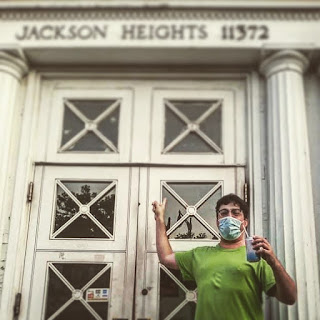 |
| I haven't finished my seltzer water! |
 I am an educator and a writer. I was born in Louisiana and I now live in the Big Apple. My heart beats to the rhythm of "Ain't No Place to Pee on Mardi Gras Day". My style is of the hot sauce variety. I love philosophy sprinkles and a hot cup of café au lait.
I am an educator and a writer. I was born in Louisiana and I now live in the Big Apple. My heart beats to the rhythm of "Ain't No Place to Pee on Mardi Gras Day". My style is of the hot sauce variety. I love philosophy sprinkles and a hot cup of café au lait.
1.7.20
Students Are Off for Summer But Teachers Are Busy Working (Am I Right?)
Dear Followers, Teachers, Lovers, Learners, and Philosophy Sprinkles Makers! Summertime Means Busy-time for Educators (Am I Right?)
 |
| Bird's Eyeview Selfie in the Backyard |
During the Summer students go on vacation, but teachers do not. How many of you are taking an extra class, learning a new skill to keep you sharp for next year, or taking on a Summer side job? I am in school so I can add to my certification! So — yeah, there is a lot of activity going on for school teachers in the Summer (even though naysayers will scoff — "Oh, teachers get two months off for Summer!".
Summer Freebie: To show you my appreciation here are two FREE quote posters to share in a Language Arts or Humanities classroom. The first is "live life to the fullest" inspirational poster from Auntie Mame and the other is more of a muse — a quote poster from Terry Pratchett's novel The Hogfather.
I am holding a sale this week on TpT to show off some new products in my Stones of Erasmus TpT store. Here's a preview of some new resources I just created:
- Philosophy in the Classroom 16 Half-sheet "Freedom" Task Card Set: Engage high schoolers with topics ranging from extrinsic and intrinsic freedoms, positive and negative liberty, and conversation starters on fighting for the right to be free (relevant for today, for sure).
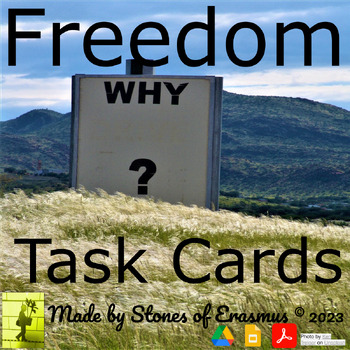
- A Serial Killer and a Hypocritical Grandmother: Conduct a short story discussion with High School students on Flannery O'Connor's explosive short fiction "A Good Man is Hard to Find"
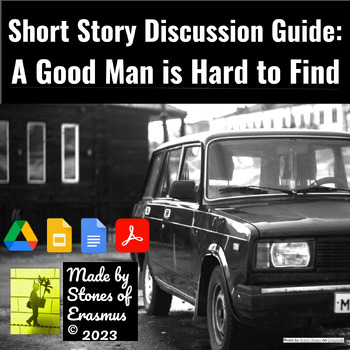
- A Demon and a Madman: Illustrate a Philosophy Thought Experiment with Nietzsche's "The Greatest Weight" and "The Madman" in a 2-resource bundle that will get high school students thinking about the meaning of life and their conception of God.

- For Younger Adolescents: I created a new Mythology Resource exploring the ancient trickster hero Sisyphus who tricks Death and pays the price.
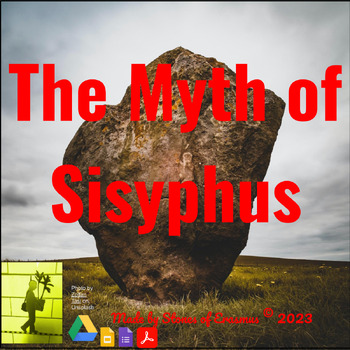
 I am an educator and a writer. I was born in Louisiana and I now live in the Big Apple. My heart beats to the rhythm of "Ain't No Place to Pee on Mardi Gras Day". My style is of the hot sauce variety. I love philosophy sprinkles and a hot cup of café au lait.
I am an educator and a writer. I was born in Louisiana and I now live in the Big Apple. My heart beats to the rhythm of "Ain't No Place to Pee on Mardi Gras Day". My style is of the hot sauce variety. I love philosophy sprinkles and a hot cup of café au lait.
17.6.20
Flannery O'Connor's "A Good Man Is Hard To Find" Is As Relevant Today As It Was in 1955 (When It Was First Published)
My professor, Sr. Jeanne d'Arc Kernion, was a senior Catholic Nun with a doctorate in English. She had been the mother superior of her monastery until it had dwindled in numbers. She was one of the few sisters left — her motherhouse was in Atchinson, Kansas — but she stayed in Louisiana until she retired a few years ago. She was one of the best English teachers I ever had because her instruction came with a love of fiction. She was always reading a new novel every week — and I felt like, for her, talking about fiction was as easy as making one's coffee with warm milk in the morning. I took her Contemporary Fiction course — which was a way for her to teach college-age students many of her favorite works of fiction she could cram into a semester.
Coming from the South, We All Knew Someone Like the Grandmother (And More Spoilers!)
We read O'Connor in that class — and I think I knew people like the Grandmother at nineteen or twenty years old. So she wasn't that shocking. In the South, we had grandmothers before anyone ever heard of a "Karen"! I also remember being attuned to O'Connor's insertions of absurd details. For example, a monkey is tied to a Chinaberry tree in the story. Who does that? And the unnamed mother has a face, according to the text, as innocent as a cabbage! Those strange details hooked me to O'Connor's fictional world, so I devoured her other stories and two works of fiction with delight.
O'Connor's fictional world is inter-connected — while her stories do not feature repeat characters and there isn't overarching worldbuilding inherent to her storytelling — it is evident that the universe of the Grandmother and the Misfit are the same universe as Hazel Motes in Wise Blood and Mr. Shiflet in "The Life You Save May Be Your Own." The universal theme that connects all of O'Connor's fiction is that our lives of dreary banality can often become undone by the macabre to shake us out of our complacency. In "A Good Man," the innocent family vacation that ultimately turns deadly shakes the reader out of their complacency. But, as you notice, if you've read the story repeatedly, O'Connor has signposted the narrative with heavy-handed hints that something awful is just around the corner.
O'Connor's Foreshadowing Technique is in Retrospect Obvious, But No One Gets it At First
I'm a high school English teacher, and I often teach the short story to Ninth and Tenth graders. I like to read the story out loud, and I have different students read different parts. I tend to read the narration. No one gets the foreshadowing until the end. Most of my students are surprised when I remind them that the Grandmother reads about the Misfit in the newspaper — it's mentioned in the first paragraph! And a quarter of the way in — Red Sammy's wife talks about a murderer attacking her restaurant. And there are other less than obvious hints. The Grandmother complains that she should dress formally for the car ride in case anyone who would find her dead on the roadside would know right away she was a lady!
Spoiler Alert! And Why People Don't See the Misfit Coming
There is also symbolic foreshadowing of the Grandmother pointing out to June Star and John Wesley a cotton field cemetery dotted with five or six grave markings. Oh no. In the end — the body count is six dead. I am assuming you, my reader, have read the short story, or you wouldn't be reading my review — but now I know you will return to the text and find the examples I just pointed out to you. My students are often shocked. And I think it says a lot about O'Connor's craft as a writer. She does not write a stray sentence. Every word, every line, is purposeful — even the details, that on first reading, seem redundant, at the end are memorable and shocking. Ironically, the Grandmother would worry about what her corpse looked like — as if people would wonder whether her dress color matched her hat! But it's those details that stick with us, the absurd and zany happenings of the Grandmother's storytelling and the insouciant children, June Starr and John Wesley — that catch our attention, and we are drawn into their world that by the end, we forget there is a Misfit on the loose. We don't see him coming.
The Grandmother's Actions Are the Biggest Red Flag
Yes, people don't see the Misfit coming, and they miss the textual clues that point to a potential dumpster fire. Yet — the sticking point is that it's all the Grandmother's fault! I think many readers see the Grandmother as goofy and a nag — slightly annoying and hypocritical. But there is also something else about the Grandmother that bothers me (besides being an archetypical Southern nag).
She doesn't think about the ramifications of her actions. If you chart it out, the entire story is the Grandmother's series of mistakes that lead to her and her family's death. And she is oblivious to her moral responsibility in this fate until the end — when in the story's climactic moment, she sees the Misfit and reaches out to him and says he is one of her own babies. I think the Grandmother sees that she is about to die, but she also, in a flash, has a revelation about her own broken, human condition.
People sometimes quip that before you die your life flashes before your eyes. But for the Grandmother — I think — she sees everything she did wrong in painstaking detail. She saw how she didn't want to go on the vacation, and when she reluctantly went, she hid the cat in her basket so no one would find out. She never thinks that perhaps her son, in reserving a motel room, would need to know that there was a cat on board. She ironically is worried that in her absence, the cat will accidentally turn on the gas burner and asphyxiate itself. When in truth, her caviler attitude is one step that brings her to her own death. Telling her son and family that she knows the location of a house with a secret door — I won't riddle you with all of the details — she forces everyone to go on a wild goose chase, which eventually leads them off the beaten path and lost. The Grandmother realizes that she has no idea how to find the house — that's it's not in Georgia — but in Tennessee — and in that moment instead coming clean with everyone she jostles the basket with Pitty Sing the cat — who jumps out in a rube-goldberg scenario that causes the Father to lose control of the car and crash it.
You may miss it if you have only read the story once — but there is a moment when the Grandmother is crouched in the fetal position, another foreshadowing of her death? She fantasizes that she is injured, so her son will have pity on her rather than become angry about leading the family astray. Now — it is perhaps easy to whisk away the Grandmother's action as just a senile senior citizen. But if we take the Grandmother to court, it becomes clear that this is a person who would rather be hurt, to be injured, to put her family in danger, rather than act honestly and allow her words to match her actions.
The Grandmother's Racist Microaggressions Should Also Be Considered
Take her behavior earlier in the story when she and Red Sammy, the Bar-b-que restaurant owner, are railing on about the moral degradation of society. But the Grandmother enjoys touting moral platitudes, but easily her actions belie her words. She thinks nothing of taking a photograph of a little black child she sees on the side of the road, not wearing pants (or, as we say in the South, britches). And she thinks nothing of telling her grandchildren a story loaded with racist innuendo about Black people.
O'Connor inserts these insensitivities into the mouth of the Grandmother because it is another way to show that this is a person who does not reflect on the implications of their actions — at all. But the Grandmother is also a person who very easily will point the finger at someone else. So when the Misfit and his henchman find the Grandmother and her family stuck on the side of the road, again, the Grandmother does not hesitate to endanger her family further when she recognizes him and shouts out his name. I should add here that I am not a criminal murderer, but if I were, I certainly would not want a witness to recognize me and shout my name, for all to hear — especially if I am a recently escaped federal prisoner. Now I do not mean to suggest that the Grandmother directly planned and caused her and her family's demise — but I will argue that O'Connor is suggesting that much of society's problems lie in an inability to truly and authentically reflect on our actions.
O'Connor's Story is Radically Relevant in Our Times that Does Not Seem Much Different from 1955
Returning to the racist and demeaning behavior of the Grandmother — she has probably never been put to task for how she talks about and treats people of color. She has become smug in her moral uprightness that she is unable, or unwilling, to see her participation in oppressing those that are not like her. An inability to appreciate difference, to see color, to see racial division is why, O'Connor's short story, is relevant for today — written over fifty years ago, its portrayal of a white person who cannot zoom out and see how she is part of a bigger problem painfully rings true in the recent events surrounding the death of George Floyd.
Black Americans have rallied together and protested the murder of an innocent Black man at the hands of a Minneapolis police officer. And cries have been shouted across the nation that we as a people, must come to terms with our conflicted relationship to race in this country. The axial moment of "A Good Man" is that the Grandmother only comes to realize her cooperation at the moment of her death — as I mentioned earlier in this blog post. The Misfit shoots her twice in the heart — which is telling — because the heart is the symbol of emotion and love. And the Misfit shot her in a moment of recoil when the Grandmother, in an almost tender moment of love, reaches out to him and calls him her child.
I think of a person tending to a wounded dog — and the dog, not recognizing the person's kindness, bites him. The Misfit has had a life of criminality, disavowal of goodness, and a childhood deprived of love and care. In the Misfit, we see a man who has indeed been a "miss fit." He does not fit into society's fabric, so he has isolated himself and chosen a life of delinquency. It is hinted that he killed his own family. And that his father physically abused him.
When O'Connor Alludes to Jesus She is Being More than Just Religious
And the Misfit's theological discussion with his Grandmother — that Jesus threw it all off balance is telling. The Misfit cannot accept a person like Jesus because the Misfit's own life has been absent of the kind of love that Jesus represents. In fact, in an almost desiring way, the Misfit wishes he had seen the person of Jesus with his own eyes and witnessed his miracles. He would have to see it to believe it. But isn't that the final irony of this messed up tale? That a racist, empty-headed, middle-class, commodity obsessed, superficial white woman becomes a beacon of love that infiltrates the misfit's hardened heart. Let that sink in.
Now we don't know what happens to the Misfit. Because the story ends. And as a teaching tip — have your students continue the story! And you may be aware that O'Connor herself gave a rendering of what she believed will become of the Misfit. She sees the Grandmother's action as a moment of grace that plants itself in the heart of the misfit that will grow like a mustard seed into a crow-filled tree! That's an interesting visual metaphor, the action of grace. And I get it. Grace (or call it a moment of aesthetic judgment) is this instantaneous moment of undeserved love — or mercy — that humans are capable of — but we often do not consider it — taken in more by reports of humanity's baser nature or propensity for violence and harm.
So how are we to come away with this story? What is the message that it leaves us with, ultimately? I think the message of "A Good Man is Hard to find" is that "the good" is something that does not come out of moral uprightness or outward bearing signs of good behavior. Do you remember who says the title of the story? It's Red Sammy — and he certainly is not the paragon of a good man. Or is he?
Goodness is Not a Polite Profile But an Eruption
In this story, the good cannot be a profile we affix to a person. As when we say, "Oh, he's good because of XYZ." Goodness is an eruption, a sudden moment of grace that can spring up when we least expect it — come in at a moment of otherwise sheer terror to open up the world anew. Perhaps the Misfit is right — Jesus threw the world off balance. Jesus — here — being an analog for that which comes into the world, despite its own gnarly roughness, and can shine forth.
Isn't it absurd that in O'Connor's worldview, that turns out to be a miserly old woman? I guess that is the truth of "A Good Man is Hard to Find." So now. I try to judge people less harshly. I also try to be more aware of my own words and how they match my actions. When I first read the story with Sister Jean d'Arc, I saw myself as a good man. I was in school, and I tried my best to go to Church, to help others. But I feel like this story is about how the usual trappings of goodness often don't reveal our true selves. For example — remember bratty June Starr and John Wesley? In the story, the children, even though they are spoiled brats and do not show respect to their elders, see the adults' hypocrisy. The family in this story do not listen to one another. They regularly talk over one another — and I think O'Connor presents us with this family for a reason. For they are not unlike many families I know — or the family I come from — in which we often bicker and complain, but rarely take a breath, and achieve quiet. And listen.
 I am an educator and a writer. I was born in Louisiana and I now live in the Big Apple. My heart beats to the rhythm of "Ain't No Place to Pee on Mardi Gras Day". My style is of the hot sauce variety. I love philosophy sprinkles and a hot cup of café au lait.
I am an educator and a writer. I was born in Louisiana and I now live in the Big Apple. My heart beats to the rhythm of "Ain't No Place to Pee on Mardi Gras Day". My style is of the hot sauce variety. I love philosophy sprinkles and a hot cup of café au lait.
12.6.20
Journal & Rant: Quotation On Owning Property (And How This Aphorism Unnerves Me)
 I am an educator and a writer. I was born in Louisiana and I now live in the Big Apple. My heart beats to the rhythm of "Ain't No Place to Pee on Mardi Gras Day". My style is of the hot sauce variety. I love philosophy sprinkles and a hot cup of café au lait.
I am an educator and a writer. I was born in Louisiana and I now live in the Big Apple. My heart beats to the rhythm of "Ain't No Place to Pee on Mardi Gras Day". My style is of the hot sauce variety. I love philosophy sprinkles and a hot cup of café au lait.


